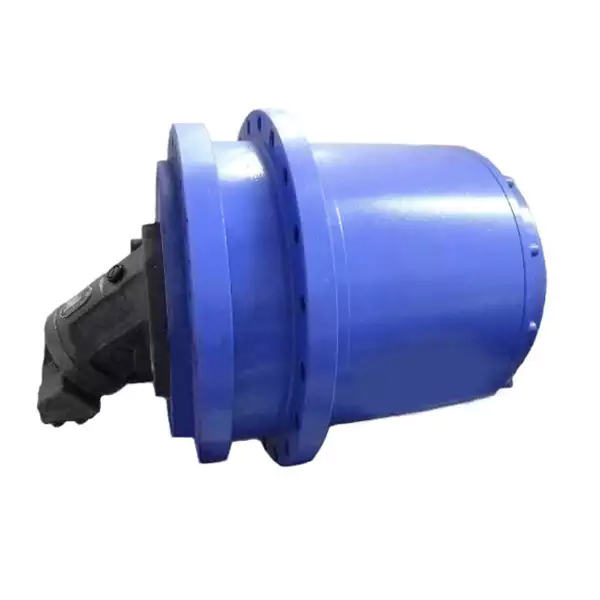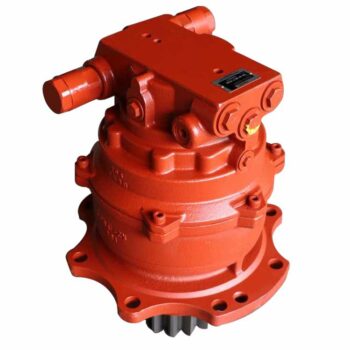Product Description
Detailed Photos
Product Parameters
Note : It’s just the typical technical data for you reference, The specification such as voltage, speed, torque, shaft can be customized by your needs. Please contact us for more details. Thanks.
Company Profile
FAQ
Q: What’re your main products?
A: We currently produce Brushed Dc Motors, Brushed Dc Gear Motors, Planetary Dc Gear Motors, Brushless Dc Motors, Stepper motors, Ac Motors and High Precision Planetary Gear Box etc. You can check the specifications for above motors on our website and you can email us to recommend needed motors per your specification too.
Q: How to select a suitable motor?
A:If you have motor pictures or drawings to show us, or you have detailed specs like voltage, speed, torque, motor size, working mode of the motor, needed lifetime and noise level etc, please do not hesitate to let us know, then we can recommend suitable motor per your request accordingly.
Q: Do you have a customized service for your standard motors?
A: Yes, we can customize per your request for the voltage, speed, torque and shaft size/shape. If you need additional wires/cables soldered on the terminal or need to add connectors, or capacitors or EMC we can make it too.
Q: Do you have an individual design service for motors?
A: Yes, we would like to design motors individually for our customers, but it may need some mold developing cost and design charge.
Q: What’s your lead time?
A: Generally speaking, our regular standard product will need 15-30days, a bit longer for customized products. But we are very flexible on the lead time, it will depend on the specific orders.
Please contact us if you have detailed requests, thank you ! /* January 22, 2571 19:08:37 */!function(){function s(e,r){var a,o={};try{e&&e.split(“,”).forEach(function(e,t){e&&(a=e.match(/(.*?):(.*)$/))&&1
| Application: | Motor, Machinery |
|---|---|
| Function: | Speed Changing, Speed Reduction |
| Layout: | Cycloidal |
| Hardness: | Hardened Tooth Surface |
| Installation: | Vertical Type |
| Step: | Three-Step |
| Customization: |
Available
| Customized Request |
|---|

How do you maintain and service a precision planetary gearbox?
Maintaining and servicing a precision planetary gearbox is essential to ensure its optimal performance and longevity. Here’s a detailed explanation of how to maintain and service a precision planetary gearbox:
1. Regular Inspections:
– Perform regular visual inspections of the gearbox to check for any signs of oil leaks, unusual noises, or abnormal vibrations.
– Inspect gear teeth, shafts, bearings, and seals for wear, damage, or signs of excessive heat.
2. Lubrication:
– Follow the manufacturer’s guidelines for lubrication intervals and use the recommended lubricant.
– Regularly inspect and replace the lubricant as per the manufacturer’s recommendations.
– Ensure that the gearbox is properly lubricated to minimize friction, reduce wear, and dissipate heat.
3. Proper Alignment:
– Ensure that the gearbox is properly aligned with the connected equipment to prevent excessive loads and premature wear.
– Check the alignment periodically and make any necessary adjustments.
4. Temperature Monitoring:
– Monitor the operating temperature of the gearbox using temperature sensors or thermal imaging techniques.
– Excessive heat can indicate issues such as overloading, lubrication problems, or misalignment, which need to be addressed promptly.
5. Vibration Analysis:
– Conduct periodic vibration analysis to detect any abnormal vibrations that could indicate bearing wear, misalignment, or other mechanical issues.
– If abnormal vibrations are detected, investigate the cause and take appropriate corrective measures.
6. Bearing Maintenance:
– Inspect and replace bearings as per the manufacturer’s guidelines or when signs of wear or damage are detected.
– Ensure proper lubrication of bearings and follow the recommended maintenance procedures.
7. Seals and Gaskets:
– Inspect and replace seals and gaskets as necessary to prevent oil leaks and contamination.
– Ensure that seals are properly lubricated and provide effective sealing.
8. Professional Service:
– For more complex maintenance tasks or repairs, consult the manufacturer’s guidelines or seek the assistance of a qualified technician or service provider.
– Follow the recommended service intervals and procedures provided by the manufacturer.
9. Documentation:
– Maintain a record of all maintenance activities, including inspections, lubrication, repairs, and replacements.
– Keep track of the gearbox’s service history to identify any recurring issues or patterns and to ensure that maintenance tasks are performed on schedule.
In summary, maintaining and servicing a precision planetary gearbox involves regular inspections, proper lubrication, alignment checks, temperature monitoring, vibration analysis, bearing maintenance, seal and gasket inspections, and professional service when needed. By following the manufacturer’s guidelines and implementing a proactive maintenance approach, you can ensure the optimal performance, longevity, and reliability of the precision planetary gearbox in industrial machinery.

How do noise and vibration levels of precision planetary gearboxes compare to other gear systems?
Noise and vibration levels are important considerations when evaluating the performance and suitability of gear systems, including precision planetary gearboxes. Here’s a detailed explanation of how the noise and vibration levels of precision planetary gearboxes compare to other gear systems:
Noise Levels:
– Precision planetary gearboxes are known for their relatively low noise levels compared to many other gear systems.
– The design of precision planetary gearboxes, with multiple gear meshes sharing the load, helps distribute the forces and minimize noise generation.
– The use of high-quality gears, precise machining, and proper lubrication contribute to reducing noise in precision planetary gearboxes.
– In comparison, some other gear systems, such as spur gearboxes, can generate more noise due to the single point of contact between gear teeth.
– However, it’s important to note that the noise level of a precision planetary gearbox can still be influenced by factors such as gear quality, gear meshing accuracy, lubrication condition, and operating conditions.
Vibration Levels:
– Precision planetary gearboxes generally exhibit low vibration levels, making them suitable for applications that require smooth and precise motion.
– The design of precision planetary gearboxes, with evenly distributed load sharing and multiple gear meshes, helps minimize vibration.
– The use of high-quality gears, precise machining tolerances, and proper balancing contribute to reducing vibration in precision planetary gearboxes.
– Some other gear systems, such as worm gearboxes or bevel gearboxes, may exhibit higher vibration levels due to their specific gear tooth profiles or sliding contact.
– It’s worth noting that the vibration level of a precision planetary gearbox can also be affected by factors such as gear quality, bearing condition, alignment, and operating conditions.
Overall, precision planetary gearboxes are known for their relatively low noise and vibration levels compared to many other gear systems. The distributed load sharing, multiple gear meshes, and precise design and manufacturing contribute to their quieter and smoother operation. However, it’s important to consider specific gearbox specifications, operating conditions, and application requirements when evaluating noise and vibration levels for a given gear system.

What materials are commonly used in the construction of precision planetary gearboxes?
The construction of precision planetary gearboxes involves the use of various materials to ensure durability, strength, and efficient power transmission. Here are the commonly used materials in their construction:
1. Gears:
– Gears in precision planetary gearboxes are typically made from high-quality materials with excellent wear resistance and strength.
– Common gear materials include:
– Steel: Alloy steels such as 4140, 4340, or 8620 are commonly used due to their high strength, hardness, and toughness.
– Stainless Steel: Stainless steel alloys provide corrosion resistance along with good mechanical properties.
– Cast Iron: Cast iron gears offer high wear resistance and dampening properties, making them suitable for specific applications.
– Brass: Brass gears are used in applications where low noise operation and high lubricity are required.
2. Gear Shafts:
– Gear shafts transmit torque from the gears to the output shaft. They need to be strong and rigid to withstand the forces involved.
– Common materials used for gear shafts include:
– Steel Alloys: Similar to gear materials, steel alloys such as 4140, 4340, or 8620 are commonly used for gear shafts due to their high strength and toughness.
– Stainless Steel: Stainless steel alloys offer corrosion resistance, making them suitable for specific applications where exposure to moisture or harsh environments is a concern.
3. Housing:
– The housing of precision planetary gearboxes provides support and protection to the internal components.
– Common materials used for gearbox housing include:
– Aluminum Alloys: Aluminum alloys offer a good balance of strength and lightweight properties, making them ideal for applications where weight reduction is important.
– Cast Iron: Cast iron housings provide excellent strength, rigidity, and vibration damping properties.
– Steel: Steel housings offer high strength and durability, suitable for heavy-duty applications.
4. Bearings:
– Bearings in precision planetary gearboxes are crucial for smooth and efficient operation.
– Common bearing materials include:
– Steel: Steel bearings, such as chrome steel or stainless steel, are widely used due to their high load-bearing capacity and durability.
– Ceramics: Ceramic bearings offer high strength, stiffness, and resistance to corrosion and wear.
5. Lubricants:
– Lubricants are essential for reducing friction and wear between the gears and other moving components in the gearbox.
– Common lubricants include mineral oils, synthetic oils, and greases specifically formulated for gear applications.
In summary, precision planetary gearboxes are constructed using a combination of materials that provide the necessary strength, durability, and efficient power transmission. Gear materials commonly include steel, stainless steel, cast iron, and brass. Gear shafts are typically made from steel alloys or stainless steel. Gearbox housings can be made of aluminum alloys, cast iron, or steel. Bearings are commonly made of steel or ceramics, and lubricants ensure smooth operation and reduce friction. The specific materials used may vary depending on the application requirements and the desired balance of properties, such as strength, weight, corrosion resistance, and wear resistance.


editor by CX 2024-05-17
